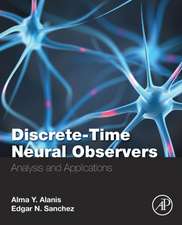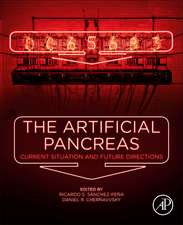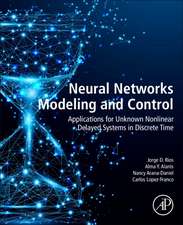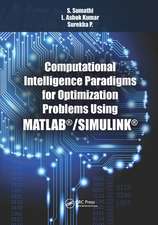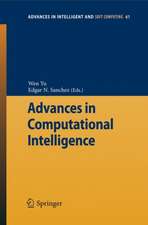Discrete-Time Inverse Optimal Control for Nonlinear Systems: System of Systems Engineering
Autor Edgar N. Sanchez, Fernando Ornelas-Tellezen Limba Engleză Paperback – 29 mar 2017
Design More Efficient Controllers for Stabilization and Trajectory Tracking of Discrete-Time Nonlinear Systems
The book presents two approaches for controller synthesis: the first based on passivity theory and the second on a control Lyapunov function (CLF). The synthesized discrete-time optimal controller can be directly implemented in real-time systems. The book also proposes the use of recurrent neural networks to model discrete-time nonlinear systems. Combined with the inverse optimal control approach, such models constitute a powerful tool to deal with uncertainties such as unmodeled dynamics and disturbances.
Learn from Simulations and an In-Depth Case Study
The authors include a variety of simulations to illustrate the effectiveness of the synthesized controllers for stabilization and trajectory tracking of discrete-time nonlinear systems. An in-depth case study applies the control schemes to glycemic control in patients with type 1 diabetes mellitus, to calculate the adequate insulin delivery rate required to prevent hyperglycemia and hypoglycemia levels.
The discrete-time optimal and robust control techniques proposed can be used in a range of industrial applications, from aerospace and energy to biomedical and electromechanical systems. Highlighting optimal and efficient control algorithms, this is a valuable resource for researchers, engineers, and students working in nonlinear system control.
Preț: 456.63 lei
Preț vechi: 590.26 lei
-23% Nou
Puncte Express: 685
Preț estimativ în valută:
87.37€ • 91.72$ • 72.52£
87.37€ • 91.72$ • 72.52£
Carte tipărită la comandă
Livrare economică 10-24 aprilie
Preluare comenzi: 021 569.72.76
Specificații
ISBN-13: 9781138073814
ISBN-10: 1138073814
Pagini: 268
Ilustrații: 80
Dimensiuni: 156 x 234 mm
Greutate: 0.45 kg
Ediția:1
Editura: CRC Press
Colecția CRC Press
Seria System of Systems Engineering
ISBN-10: 1138073814
Pagini: 268
Ilustrații: 80
Dimensiuni: 156 x 234 mm
Greutate: 0.45 kg
Ediția:1
Editura: CRC Press
Colecția CRC Press
Seria System of Systems Engineering
Cuprins
Introduction. Mathematical Preliminaries. Inverse Optimal Control: A Passivity Approach. Inverse Optimal Control: A Control Lyapunov Function Approach, Part I. Inverse Optimal Control: A Control Lyapunov Function Approach, Part II. Neural Inverse Optimal Control. Glycemic Control of Type 1 Diabetes Mellitus Patients. Conclusions. References.
Notă biografică
Edgar N. Sanchez is a researcher at CINVESTAV-IPN, Guadalajara Campus, Mexico. He was granted a U.S. National Research Council Award as a research associate at NASA Langley Research Center (January 1985-March 1987). He is also a member of the Mexican National Research System (promoted to the highest rank, III, in 2005), the Mexican Academy of Science, and the Mexican Academy of Engineering. He has published more than 100 technical papers in international journals and conferences, and has served as reviewer for various international journals and conferences. His research interest centers on neural networks and fuzzy logic as applied to automatic control systems.
Fernando Ornelas-Tellez is currently a professor of electrical engineering at Michoacan University of Saint Nicholas of Hidalgo, Mexico. His research interests center on neural control, direct and inverse optimal control, passivity and their applications to biomedical systems, electrical machines, power electronics, and robotics.
Fernando Ornelas-Tellez is currently a professor of electrical engineering at Michoacan University of Saint Nicholas of Hidalgo, Mexico. His research interests center on neural control, direct and inverse optimal control, passivity and their applications to biomedical systems, electrical machines, power electronics, and robotics.
Descriere
This book presents a novel inverse optimal control approach for stabilization and trajectory tracking of discrete-time nonlinear systems. This approach avoids the need to solve the associated Hamilton-Jacobi-Bellman equation and minimizes a cost functional, resulting in efficient controllers. The book also proposes the use of recurrent neural networks to model discrete-time nonlinear systems. Combined with the inverse optimal control scheme, such models constitute a powerful tool to deal with uncertainties such as unmodeled dynamics and disturbances. Simulations illustrate the effectiveness of the synthesized controllers.




